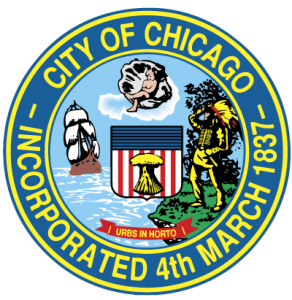
The four key pillars of the plan are: Access to Opportunity, Aligning Our Streets with Our Values, Streets Free from Violence, and A CDOT That Works. These pillars provide a framework in which 21 goals, 84 strategies, and hundreds of benchmarks are laid out in one-and three-year increments to chart a course toward building safer streets; reprioritizing transportation projects to increase access to opportunities for residents in historically neglected neighborhoods; working with CTA and regional transit agencies to expand public transportation access; creating safer streets and crosswalks to encourage walking; and expanding bike share, bike lanes, and dedicated bus lanes citywide. It also includes six Equity Challenges posed by the Transportation Equity Network with the goals and strategies that CDOT has committed to in order to meet these challenges.
Goals
◆ Make it safer and easier to walk in Chicago
Whether people ride the bus, drive, or bike, getting to and from their destination will require navigating the city’s roads and sidewalks as part of the journey. Streets that are safe to cross and sidewalks that are maneuverable and wide enough to accommodate a wheelchair or stroller are necessary preconditions for a livable city.
◆ Review and revise Complete Streets Policy and Pedestrian Action Plan, with a focus on current policy needs including transit access, Vision Zero, equity, and walkability
◆ Complete the Smart Lighting Program (see page 56 for benchmarks)
◆ Improve the condition of existing sidewalks and provide sidewalks where they are missing
◆ Install and enhance crosswalks and curb ramps at transit stops and other priority locations with a focus on equity
◆ Partner with CTA to reduce commute times and improve the transit experience for all Chicagoans
Getting to and from work or school is not just about convenience. Often where people live can dictate where they can work due to inefficiencies in the transportation network. Increasing availability of and access to reliable transit means fewer car trips. It also helps families not have to own a car, or more than one car, just to get where they need to go every day. CDOT will double down on its partnership with CTA by building walkable neighborhoods, accessible sidewalks, and transit-supportive improvements on key bus corridors.
◆ Expand transit access to more Chicagoans through coordination with CTA, Metra, and Pace
◆ Improve travel times on high-ridership bus routes
◆ Identify and implement rapid bus corridors
◆ Support development and implementation of eTOD policy and pilots
◆ Make cycling a safe, affordable transportation option for more Chicagoans
The increase in people biking and the popularity of the Divvy bike share program shows the growing demand for cycling infrastructure. We will continue to support this demand by making Divvy accessible to every Chicagoan, building out the bike network, building more and better protected bike lanes, and measuring and analyzing where we go and how we get there to maximize the efficiency of this sustainable and healthy transportation mode.
◆ Bring Divvy to every Chicago neighborhood
◆ Expand Chicago’s bike network, prioritizing protected bike lanes wherever feasible
◆ Expand micro mobility solutions, such as e-scooters, for Chicago
◆ Improve bike ridership data collection
CDOT’s Strategic Plan Press Conference 7-21-2021: https://youtu.be/AtEKHdlUKcE